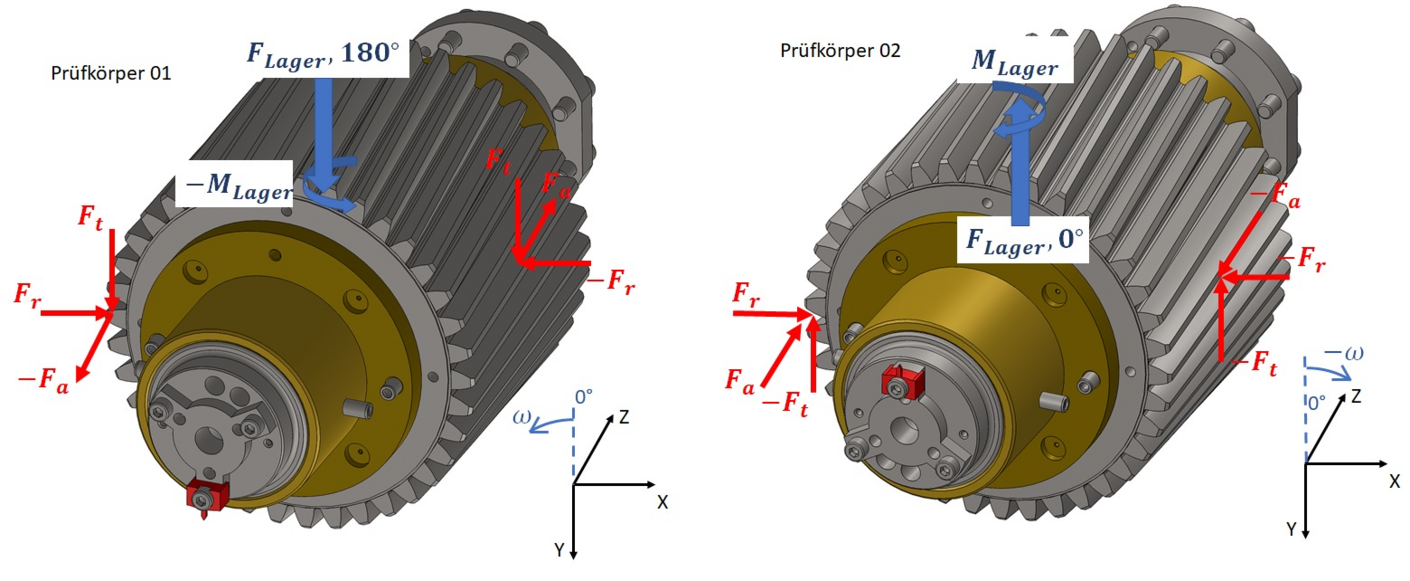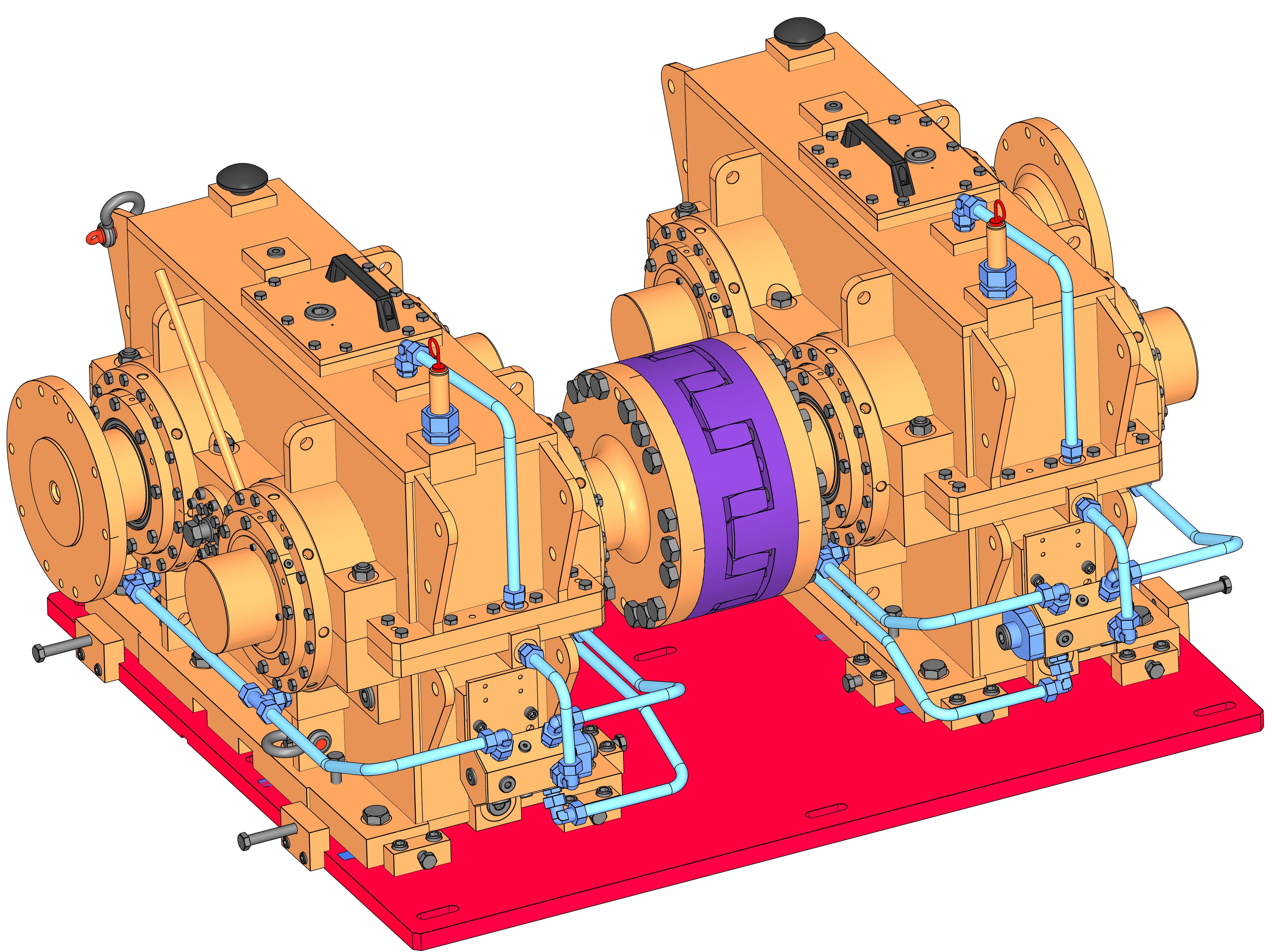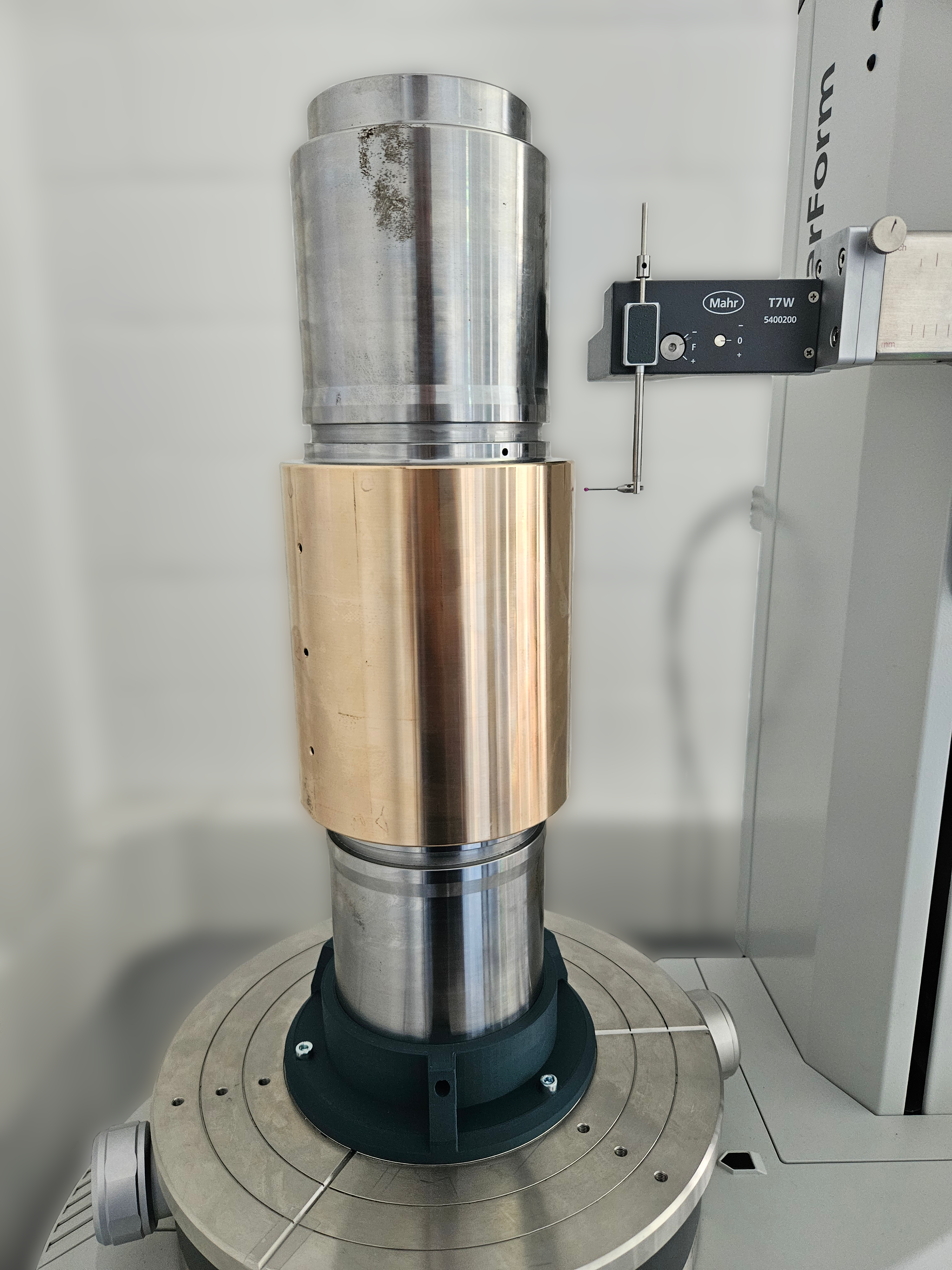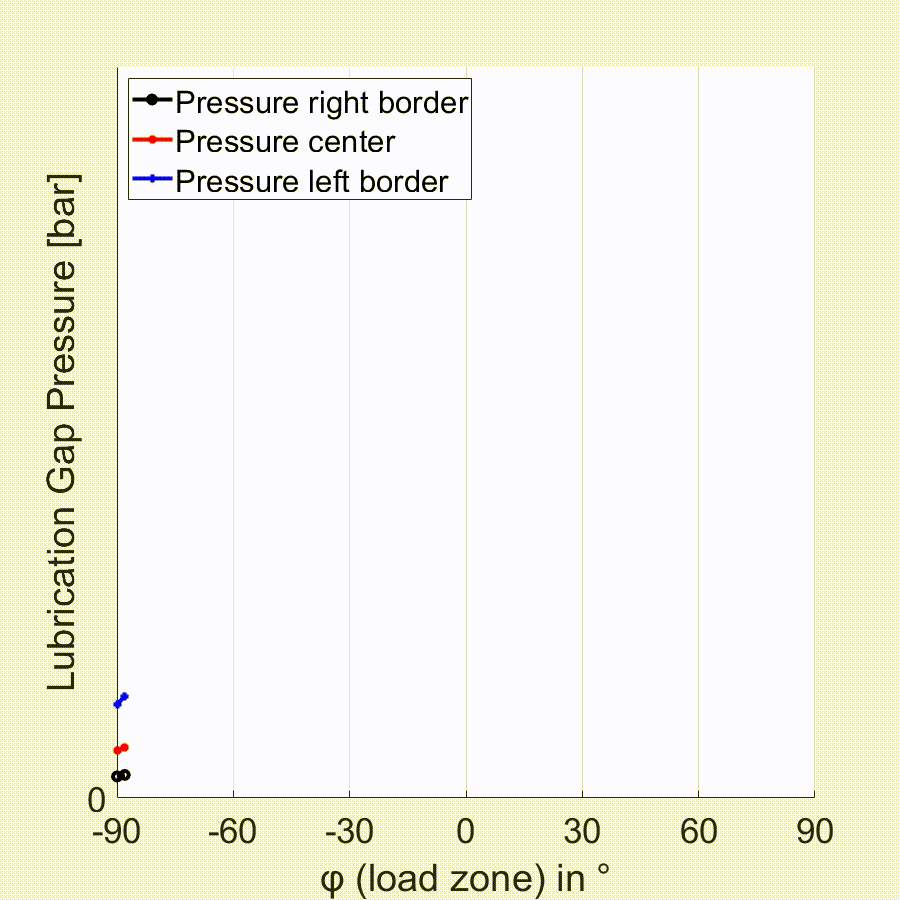Tensioning circuit test rig for the investigation of plain bearings in wind turbine planetary gearboxes
Winnipeg - Wind turbines with innovative planetary gear plain bearings
The "Winnipeg" test rig is designed for the investigation of hydrodynamic plain bearings in planetary gearboxes. The tests focus on the slow and highly loaded plain bearings of the first reduction stage in wind turbines. In order to keep energy consumption as low as possible, the design concept of the "tensioning circuit" is used. Due to its design, the test rig enables independent control of the torque and speed in terms of direction and amplitude, which ensures a high degree of flexibility in use. Among other things, the planetary plain bearing test rig can simulate continuous operation, reverse turning, short-term acceleration and braking processes as well as transient conditions (such as emergency braking, turbulence in turbines, etc.).
The test rig can be used to test plain bearings under a surface pressure of 17.2 MPa and a circumferential speed of 0.6 m/s. The load application point can be changed by varying the shaft distance between the ring gear, planetary gear and sun gear. In addition, the fixed pin can be rotated in order to measure the pressure distribution at three points in the axial direction.
Key test bench data:
| Parameters | Nominal value | Unit of measurement |
| Bearing diameter | 130 | mm |
| Bearing width | 156 | mm |
| Maximum average surface pressure | 0.1 to 17.2 | MPa |
| Relative bearing clearance | 0.6 to 1.8 | ‰ |
| Peripheral speed of the running surface | 0.1 to 0.62 | m/s |
| Oil supply pressure | 1 to 10 | bar |
| Oil feed temperature | 20 to 70 | °C |
| Measuring sensors | 2 temperature sensors on the sliding surface Lubricant supply temperature Lubricant pressure and volume flow Speed and torque 3 pressure sensors on the sliding surface | |
Video material:
High-load planetary gear bearing test rig at the Institute of Tribology and Energy Conversion Machines




